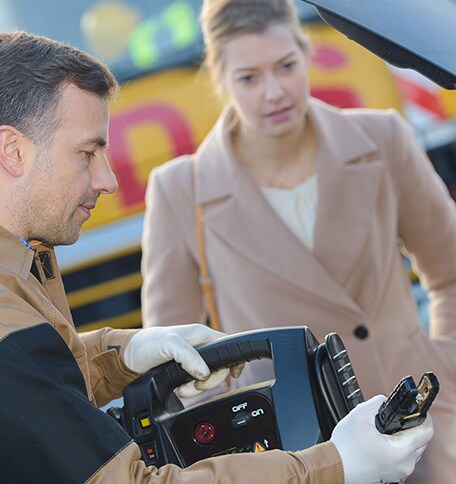
Contact Us Today!
Even if your vehicle is in perfect working order, knowing how to jump-start a car is a valuable skill to have in your back pocket. It's a situation nobody wants to be in, but sometimes life has other plans. No matter if it's a new or old vehicle, the battery can die from a variety of causes, and often without you suspecting it. Whether it's waking up on a winter's morning to a car that won't start or finding the same issue after a quick shopping trip, you'll now need to jump-start a car. This is your ultimate guide on why it's needed and how to do it.
Why Won't My Car Start?
There are many answers to this question, and the most common one is a dead battery. Put your key in the ignition, turn it to the "on" position. If the engine starter or the electrical systems don't turn on, the issue is very likely your battery. A battery is just a battery, right? Yes, but it doesn't work alone. In a nutshell, whether on used or new cars for sale, starting a vehicle's engine requires three major parts:
- Battery
- Starter motor
- Alternator
The battery stores an electrical charge. That charge powers everything from the headlights to the air conditioning when the vehicle is running. To get it running requires the starter motor. In essence, a starter motor cranks over the engine, getting everything inside moving so that the internal combustion process can begin - that's also the end goal of knowing how to jump-start a car. Once started, the battery's power is used to ignite the fuel-air mixture in the engine via spark plugs.
Think about a wind turbine. An external force spins a generator to produce electricity and then stores it for later use. In your car, the battery is that storage, and the alternator is that generator. An accessory belt powers an alternator. That belt attaches to and is spun by the drive belt pulley on your engine. While the engine runs, the alternator generates electricity.
Let's recap real quick. The battery provides the power to start your engine, while an alternator generates power for the battery while the engine is running. Why does knowing this matter? It's an interconnected system. When the process of how to jump-start a car fails, knowing what else may be wrong can help. Now let's look at why a battery may die in the first place.
Why Is My Battery Dead?
Car batteries aren't magic; they use a mixture of chemicals to store electricity. Those chemicals can be affected by external conditions. Like how a smartphone loses its charge faster in cold temperatures, so does your vehicle's battery. Another reason is that the battery's lifespan is coming to an end. Similar to smartphones as well, the battery can lose its ability to hold a charge over time. No matter if it's a new vehicle or one of our used cars under $15,000, replacing the battery every five years is recommended to avoid this.
The other answer is human error. It's understandable. After a long day's work, you just want to hit the couch and relax. An interior light turned on can be easy to miss as you head inside, and if left on overnight, the battery will die. Aside from that, previously mentioned alternator issues can cause the problem. Combine all these factors with a battery that isn't being charged properly, and knowing how to jump-start a car will frequently be needed. Finally, the battery cables may be loose, or the terminals they connect to may be corroded.
Now, let's move on to what you came here for: how to jump-start a car.
Safety First
While you can safely jump-start a modern car or older one without issue most times, things can go wrong. Safety is essential but straightforward. Wear safety goggles and a pair of non-conductive gloves, and never touch the positive and negative cable leads together. A battery can potentially explode or catch fire; don't let it stop you with fear, but don't take safety for granted. Now that you're protected, here's how to jump-start a car:

